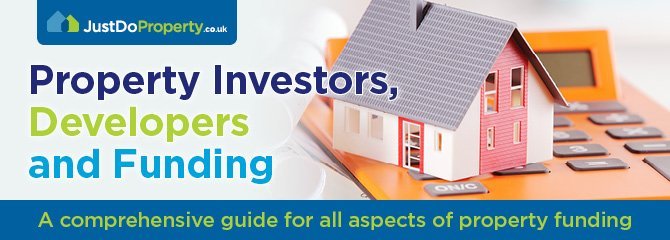
It seems that loft conversions aren’t just a growing trend in the UK generally, as recent research reported in the Daily Mail has shown that the City of London is seeing a particular rise in homeowners taking to the roof – with an average of 4 out of 10 London homes now including loft conversions.
Behind the trend
Whilst the ongoing housing crisis of London is clearly partly responsible for the increase in the number of homes now extending to loft accommodation, other factors such as the general cost of London homes and the expenses related to moving are certainly also relevant.
With London property prices being some of the highest in the UK and still steadily rising – increasing by approximately 12.3% since 2015 in London generally and growing by a significant 20% in boroughs such as Newham (Homes and Property, Sept 2016) – the purchase price of any London home will include Stamp Duty fees. Following 2014’s changes to Stamp Duty, this tax alone can seem to add a prohibitive extra cost onto a house move which already costs significantly more than in other areas of the UK.
For example, the purchase price of an average London property of approximately £500,000 (compared to the UK average of £292,000, March 2016) comes with an additional Stamp Duty bill of around £15,000. For those who purchase a property of £937,000 or over, the next tax bracket means finding an additional 10% of the property purchase price. As such, stamp duty adds a considerable expense to the costs of moving home, even before solicitor and estate agent fees come into consideration. If the move is being sought in order to gain additional space, such as an extra bedroom, en-suite, playroom or studio, then converting the loft of a London home is often significantly less expensive than actually moving.
Of course, being short of space is one of the primary reasons for extending into the loft. This is particularly true of London where research has shown that boroughs with high property values but a low number of homes have seen a particular growth in loft conversions from 2010 to 2015. Areas such as the City of Westminster, which has a low number of actual residential properties, have seen 40% of the 13,000 houses in the borough being extended with loft conversions.
Between the boroughs
When it comes to the trend for London loft conversions, the difference between London boroughs doesn’t just extend to how many available homes are in the area, it also concerns the planning regulations, which may be different across the boroughs.
Overall, the Government wants to make it easier for London homeowners when it comes to extending into loft areas. Regulations are already being changed in some boroughs, to allow properties to be extended upwards by two levels as far as (but not beyond) the roofline of an adjoining building. The planning process overall is also being addressed, with efforts to create simpler planning application routes which don’t necessarily require detailed plans, to both speed the process up and reduce costs to homeowners.
In some areas, planning consent is not necessarily needed unless the property falls within a conservation area, although of course all loft conversions should be carried out in compliance with building and safety regulations. Since many of these planning changes began to be implemented in 2015, planning applications for loft conversions in London increased by approximately 13%, whilst the number of home transactions across London boroughs has dropped by the same amount.
Moving up without the cost of moving on
As well as building upwards to avoid the costs of stamp duty and legal fees, loft conversions in London offer the opportunity to create a family-sized home without having to take on the mortgage usually associated with the price of a family-sized London property – well over half a million pounds in many boroughs.
Alongside cost, another primary reason for staying put is the fact that location matters – in London being in a good area counts, particularly where commuting and schools are concerned. The number of lofts being converted to provide rooms suited to family use, such as bedrooms, master suites and playrooms demonstrates that many families prefer to extend their smaller home in a good area, rather than take on the costs of moving to a larger home in another area, particularly if there are commuting costs of both time and money to add to the considerations.
Up in the loft, upping the value
Extending up into the loft space is often the most appropriate extension for city homes, where outside space is often at a premium and can itself add considerable value to a property. Property in the city which includes outside space such as a rear garden, can command premium prices so householders who require additional space can be understandably reluctant to extend onto the garden to achieve additional square footage, when the same result can be achieved by redeveloping the loft space.
The London Homebuilding & Renovating and Home Improvement Show of 2014 revealed that loft conversions are the most popular way to extend a property as this is one of the easiest ways to create space and add flexibility to current accommodation or fulfil a specific need, such as a master bedroom suite. Indeed, in London loft conversions are proving to be the ideal solution for increasing square footage inside without compromising the outside: garden space remains intact whilst accommodation, as well as the property value, is maximised.
In fact, according to Nationwide’s House Price Index adding to the total floor area of an average property adds approximately 22% to the value of the home – that’s around £42,000 for adding a whole loft conversion to an average London property. Even where space is particularly limited, creating an extra bathroom in the loft can add around 4.9% or almost £10,000.
Overall, for London homeowners looking towards improving, rather than moving, to add accommodation and additional value to their already costly homes, loft conversions are proving to be the best option for the right space, in the right place. See some examples on Abbey Lofts.
- Selling a House in a Trust After Death: What You Should Know - April 18, 2024
- Maximising Your Home’s Potential: The Ultimate Renovation Checklist - April 16, 2024
- Key Tips on Managing Your Property Portfolio - April 16, 2024



